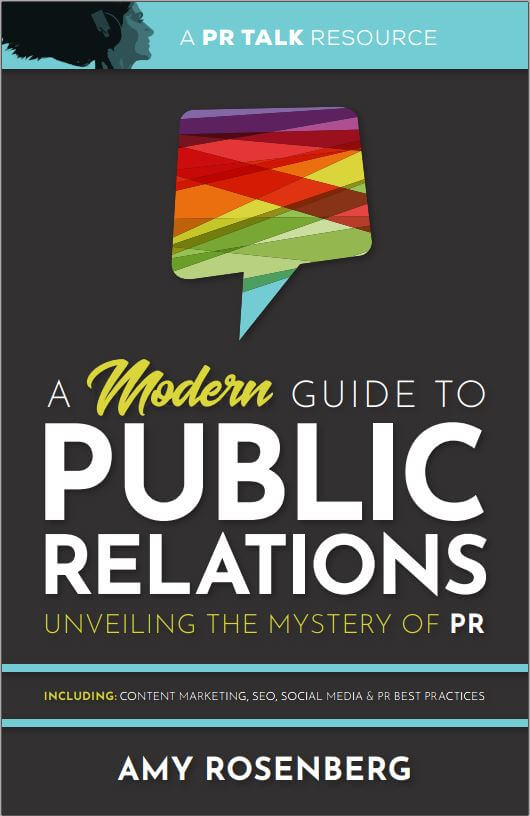If you’ve worked in PR for any length of time, you know how stormy the last few years have been. However, a growing number of signals — like persistent inflation, increased layoffs and recession threats — suggest that COVID-19 could have merely been the calm before the real storm.
As we enter 2023, many businesses that weren’t affected by the pandemic (like real estate and tech) are beginning to show signs of stress. If the economy continues to deteriorate, that stress will likely spread more widely.
The PR industry won’t be immune from these shockwaves. The best we can do is make intelligent plans based on the best information available. With that in mind, here are a few top issues we’re tracking in the New Year.
PR Planning Has Changed
Once upon a time, PRs could make an annual plan and mostly stick to it throughout the year. But these days, events move at a much quicker pace thanks to the internet and social media. That doesn’t mean that PRs should stop planning altogether. Instead, they need to be willing and able to shift away from their macro planning to capitalize on the fast-moving micro trends that drive so much media coverage.
Track Macro Trends for PR Planning
We know several large-scale events will impact us in 2023. They include a looming recession, the rising cost of living, climate change and the countdown to the general election. Depending on the industry, PRs can reliably plan their outreach campaigns based on these overarching issues. For example, summer has become a wildfire season in much of the west thanks to climate change. PRs can use this unfortunate fact to plan relevant campaigns. While these macro trends can serve as the backbone of our planning, PRs must also be ready to change course quickly.
Pivot in Response to Micro Trends
Last year we watched several unexpected news stories dominate the media landscape. These included a monkeypox outbreak, the death of Queen Elizabeth II, Russia’s invasion of Ukraine, Elon Musk’s purchase of Twitter and dozens more. We also watched cultural topics consume American discourse. For example, the media discussed The Great Resignation for months before eventually moving on to Quiet Quitting.
News trends like these are impossible to predict. But as the media universe continues shrinking, fast-moving micro-trends will continue to be all-encompassing until they suddenly aren’t. That’s why PRs must be able to track these topics, key into them to break through and then move on to whatever comes next.
PR Must Deliver More for Clients
Selling traditional media relations as a standalone offering is becoming less and less relevant. It’s clear PRs will face a more challenging economic environment in 2023 than they have in quite some time, particularly when it comes to delivering value. To respond, PRs need to get more creative with their deliverables and connect with marketing to maximize ROI. Here are a few ways PRs can do this in 2023.
Explore Influencer Marketing
Influencer marketing has become something of a dirty word in our industry, especially with more buttoned-down PR people. However, influencer marketing is on the rise, particularly with consumers, because it’s viewed as more authentic. So it’s time for PR professionals to embrace the megaphone influencer marketing provides.
Part of this process comes by expanding the definition of who an influencer is. An influencer in the B2B space could be someone speaking at a trade show or publishing an article in an industry publication. This is just one example of the creativity PRs will need to bring to their work in 2023.
Use Data to Demonstrate Value
PRs have always struggled to prove our worth because so much of our work wasn’t tied to a measurable return. However, this all changes in a digital world. Data can help us prove our value while also enabling us to produce better content. Demonstrating the work’s value will become even more critical in 2023 because companies will be less likely to invest in PR in a lousy economy if they can’t prove its worth.
Part of this process involves educating clients about what’s happening on the technical side of the work. Veracity demonstrated to one of our clients how readers stayed on the page longer after we took over writing their sponsored content. This insight is critical when a client’s conversion process isn’t straightforward. In those instances, PR work becomes part of the broader customer journey.
PRs need better media databases that include better data to accomplish this push toward improved data integration. It also helps if these databases can automate some work in case firms need to work more leanly in response to changing business conditions.
Other Business Trends to Watch
Here are a few other key issues for PRs to watch as they navigate an uncertain year.
A Shift to an Employers’ Market
Last year’s big business story was the ongoing worker shortage and the challenges many employers faced finding the employees they needed. This imbalance led to rising wages, staff shortages and increased employee turnover. However, there’s evidence that this dynamic is already beginning to change, and we’ll soon see a complete shift back into an employer’s market.
Making Good on DEI Promises
Many brands made lofty diversity, equity and inclusion (DEI) promises during the protest periods of 2020. It’s time for those brands to make good on their word. PRs should look closely to see if their companies have fulfilled their promises. Anyone can tip off the press or the public if a brand isn’t living up to what they said they’d do. PRs can use this opportunity to do what’s right and work positively and proactively.
Choose New Clients Carefully
Some PRs might be willing to take on potentially problematic clients during uncertain economic times. But the problems these clients bring are rarely worth the billable hours. If a new client doesn’t buy into a process, provide needed feedback or resist the discovery process, they might not be long-term partners. PRs don’t have time to ramp up a new client, only to lose them a few months later.
Be Prepared for Volatility
If I could distill my advice down to a single recommendation, it would be to prepare for volatility in 2023. That process involves careful planning, responsiveness, flexibility and discernment. Fortunately, those are all qualities PRs already possess. We’re accustomed to change and uncertainty, and we’ve learned how to thrive under those conditions. The upcoming year will likely be challenging, but if we can endure this storm, we’ll be even more effective, and that’s all that really matters.









